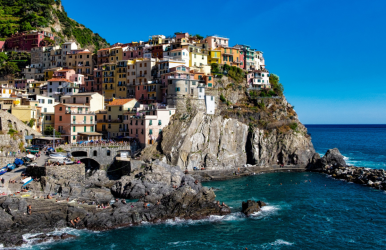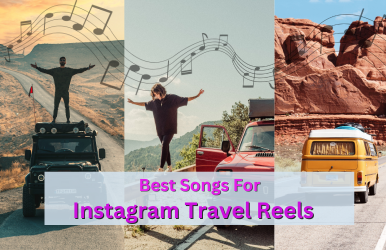What To Pack For A Week-Long Camping Trip?
BY Sibashree Jan 9, 2026
“Ma, will you miss me when I am in the camps and do the trek with my school friends?” I was a little surprised, as every mom would be when a 13-year-old these days says such emotional things! I looked at her and then straight at her rucksack and the entire mess around it. She read my expression. “Ma, I don’t know what to pack for camping. My class teacher gave us a list, and I cannot find it now.” There is no point in telling her that she cannot be so careless with plans of camping and trekking in her mind. I texted her teacher, and until she replied, I got started with the basics. My years of experience as a traveler and travel writer were waiting for this day of glory 😉! Nevertheless, sometimes, being a mother, you have to do things! Now, a whole week of camping may sound amazing. Fresh air, quiet mornings, that forest smell that sticks to everything. Honestly, it’s like hitting the reset button. Then reality hits. Seven days out there? What even do you bring?You want fun, not a trip full of “why did I leave that jacket at home?” or “Ugh, no power again.”So, what actually goes in your bag without turning it into a nightmare? Here are some practical tips you need to remember. What To Pack For Camping? Things You Need To Carry For Survival You need a good shelter, food that keeps you going, and some survival tools when you are camping. Also, keep some books or board games handy to spend those long evenings. 1. Shelter And Sleep Essentials A solid tent is a must. Rain, wind, surprise weather! Your tent better not bail on you. Some tents are super roomy but heavy. Your shoulders will hate you. If you’re hiking far, weight matters more than space. I had to spend 30 minutes convincing my daughter about the same and had to make her talk to my fellow trekker, whom she, of course, trusts more than me. Now, it’s about the sleeping bag. You have to consider the weather and ground conditions when choosing the right one. If the bag is made of synthetic material, it will help to manage wet weather. But, if you are choosing down bags, those will be more compressible and occupy less space. However, they will not forgive your wet conditions. In addition, you have to carry sleeping pads. Sleep on the hard ground for two nights, and you will know why you need these sleeping pads. Pillow, of course, is an optional choice. I made a makeshift pillow for my daughter by stuffing some old clothes in a bag. 2. Clothing Weather changes, and fast. Cold mornings. Hot afternoons. Damp nights. You get the idea. Layers that dry fast are your friend. Zip-off pants, light jackets, even a swimsuit, sound extra, I know. But there’s that one river crossing or random rainstorm where you’ll be glad. Socks. Bring more than you think. Blisters ruin everything. Shoes matter too. Waterproof boots, yes. But a lighter pair for hanging around camp? Total win. 3. Food Freeze-dried meals are easy, lightweight, and actually tasty now. Add fruit, nuts, or some cooked food if you can. I got my daughter a few protein bars. I made those at home using roasted sesame seeds, jaggery, and peanuts. Also, I stir-fried some boiled peas with salt and some seasoning and packed them in a zipper pack. These munchies really help, and unlike the ready-made snacks in the market, these don’t make you feel dehydrated. Breakfast? Keep it simple. Oatmeal, instant coffee, snack bars. Done.Lunch is usually wraps, nut butter, and trail mix. Easy stuff. Dinner? One-pot meals are gold. Less cleanup, less stress. Don’t forget small things like oil, salt, or spices. Little stuff goes a long way. Water. Super important. Bring enough. Know where to refill. Hiking miles because you misjudged water? No thanks. 4. Tools And Survival Necessities A good knife, a small multi-tool, and a headlamp with extra batteries, and you’ll use these more than half the fancy gadgets you’re tempted by. Use maps or a compass, even if you have a phone. Phones die. Signal disappears. Happens. Electronics? Charging them can be annoying. Also, portable energy solutions can save your sanity at some point, trust me. 5. Safety Essentials Hygiene. Boring, but trust me! After day three, you’ll care. Soap, toothbrush, wipes, quick-dry towel. Sunscreen and bug spray! You cannot forget any of these essentials. You will also need a first-aid kit. Blisters, cuts, aches, all of it! Bring painkillers, allergy meds, and anything personal you need. Hand sanitizer is more than just about germs. Whistle or signal tool? It might feel extra, but one day you’ll be glad you have it. 6. Entertainment Evenings can be long. Books, journals, cards, and small instruments will help you to pass the time. Hammocks are great for some chill instantly. You will love staring at trees or taking photos when relaxing in a hammock. Also, you can bring camp chairs. Sometimes, comfort wins over minimalism, especially when you are doing back-to-back camping or trekking. What To Pack For Camping? Don’t Feel Overwhelmed Are you camping for the first time, and that too for seven days? The packing procedure can get a bit overwhelming. It’s okay. However, making a list of essentials or talking to your tour operator will help. Also, you can reach out to anyone in your camping group. When traveling solo, you can post your queries in Facebook travel groups. Still, it all starts with getting a good quality tent, and you have to learn how to set it up properly. Also, carry layered clothes as temperatures change and weather conditions can change dramatically after sundown, or there can be sudden turns of events. Furthermore, you will need lights and lightsaver tools, and you must keep your meals simple. Moreover, you have to keep some things or aspects spontaneous while camping. Everything will not happen as planned. You may have to collect a dead branch and wash it to use in cooking if you have left the spatula at home! Things like these will happen, and how you overcome them is the real fun of camping. Read Also: Must-See Attractions While Camping on Everest Base Camp Trek Why Solo Adventures Can Be Life-Changing The Best Great Barrier Island Camping Tips






















